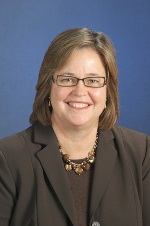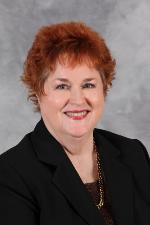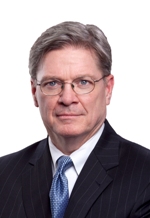
Providers Getting Creative with New Healthcare Delivery Models
The times are changing, and healthcare providers are discovering new models to more efficiently deliver quality care while reducing costs.

Jordan Battani indicated multiple models of care delivery will evolve.
“There will be lots of flavors and mechanisms that spring up to meet those objectives,” said Jordan Battani, managing director of CSC’s Global Institute for Emerging Healthcare Practices, headquartered in Falls Church, Va.
“Reimbursement is changing to be more focused on outcomes than fee-for-service,” said Patrick Pilch, managing director with BDO Consulting and member of the firm's healthcare practice in New York. “You are seeing more initiatives as hospitals focus on population health management.”
Strategies to address population health rather than one patient at a time represent a culture shift, added Marla Roberts, DrPH, RN, solutions manager for CTG Health Solutions in Dallas.
Settings for healthcare delivery continue to move from acute care to networks in the community, and care is becoming more consumer-centric and more coordinated, Pilch said.
Additionally, providers are using business intelligence data that combines clinical and financial information to track frequent healthcare users and intervene to prevent future admissions and emergency department visits. Roberts indicated the move toward analysis of the data is progressing but very slowly.
“You create value in healthcare, in the form of good patient outcomes and lowering the cost of care and providing access,” Pilch said. “And those who do it the best will get rewarded.”
Silos are coming down. More healthcare providers are becoming payors and assuming more risk. For instance, North Shore-LIJ Health System received a license last month to provide health insurance. It believes this is the first commercial insurance license ever issued to a healthcare provider in New York State. The plan will be available on the state’s health exchange starting in October, with coverage taking effect January 1, 2014.

Marla Roberts, DrPH, RN, said organizations are restructuring to integrate from a management perspective as well as clinically.
At the same time, healthcare insurers are entering the provider marketplace, as evidenced by Humana’s purchase of Concentra and shifting its focus from urgent care to primary care, according to The ConvUrgent Care Report.
Insurers also are purchasing physician practices and plan on competing with hospital-based accountable care organizations, Roberts reported. She also indicated a proliferation of mergers and acquisitions, but the challenge is truly integrating and coordinating care.
Accountable care organizations
While not new, the Affordable Care Act (ACA) brought accountable care organizations (ACOs) to the forefront of new delivery models. ACOs manage a population with the triple aim of reduced cost, improved health and a good patient experience.
“ACOs may or may not be the most important innovation,” said Battani, indicating that ACOs are not the only way to achieve the triple aim.
Earlier this summer, the Centers for Medicare & Medicaid Services (CMS) announced positive and promising results from the first performance year of the Pioneer ACO Model, with Pioneer ACOs earning $76 million by providing coordinated, quality care and saving nearly $33 million to the Medicare Trust Funds. Only two pioneer ACOs experienced shared losses totaling approximately $4.0 million. Costs grew by only 0.3 percent in 2012 in the Pioneer ACOs, whereas costs for similar beneficiaries grew by 0.8 percent in the same period. All 32 Pioneer ACOs successfully reported quality measures and achieved the maximum reporting rate, with all earning incentive payments for their reporting accomplishments.
“These results show that successful Pioneer ACOs have reduced costs for Medicare and improved the quality of care for their patients,” said CMS Administrator Marilyn Tavenner, in a statement. “The Affordable Care Act has given us a wide range of tools to realign payment incentives in Medicare and Medicaid, and these efforts are already paying off.”
Seven ACO Pioneers are shifting to a different CMS program, and two ACO Pioneers--Plus (North Texas Specialty Physicians and Texas Health Resources) and Presbyterian Healthcare Services in New Mexico--will not participate in Medicare accountable care programs.
“It’s emblematic of how difficult it is for organizations to do, move from one model of care delivery to another one,” Battani said. “It’s a mixed environment with financial incentives associated with the old models of care.”
Patient-centered medical homes
Patient-centered medical homes, which deliver care in a more coordinated fashion with a whole-person orientation, also received a boost from the ACA.
“It’s structured around creating a care plan that is managed and coordinated for that patient,” Battani said.
More than 5,500 practices with nearly 27,000 providers have earned patient-centered medical home recognition from the National Committee for Quality Assurance (NCQA). The organization recently added Patient-centered Specialty Practice recognition.
Telehealth

Patrick Pilch said care models are changing to reflect a transition to outcome-focused reimbursement.
Pilch also reports an increased use of telehealth, particularly monitoring patients with chronic illnesses with data returning to the provider, who often can prevent a trip to the hospital.
“It’s almost like a virtual house call,” Pilch said. “Telemedicine will be a key component of this.”
Hospital-based telemedicine also is taking off. Telestroke programs allow more rapid diagnosis and treatment by vascular neuroplogists of patients suffering from a cerebral vascular accident, such as the program at the UPMC Stroke Institute in Pittsburgh, Penn.
Yet telemedicine is not limited to acute medical conditions. Carolinas Medical Center in Charlotte, N.C., recently introduced a system-wide telepsychiatry program, which provides a mental-health evaluation without moving the patient to a psychiatric facility.
Retail clinics
More than 1,400 retail clinics are operating in the United States, ConvUrgent reports, with nearly half being MinuteClinics, which is investing in telehealth, clinics without an in-person professional. Additionally, many healthcare systems have entered the retail market, including Alegent Creighton Health in Omaha, Neb., and Baptist Health in Lexington, Ky., which operates 18 clinics in Walmart stores.
Pilch expects to see more retail clinics, because they afford great access to care for minor illnesses and a less-expensive alternative to after-hours care. The professional staff can recognize an urgent matter and refer the patient to the nearest emergency department. Many of the established retail clinics, such as Walgreens’ Healthcare Clinic, have expanded into diagnosing and treating chronic illnesses.
In addition, Walgreens is becoming partners with physician practices in ACOs. The company also is collaborating with health systems to offer immunizations and other services that can be provided more cost effectively in the retail setting, Roberts said.
Greater integration
Providers--from hospitals and physicians to long-term care--are becoming more adept at managing patients with chronic diseases, including “dual eligibles,” whose average annual spending far exceeds either Medicare or Medicaid beneficiaries, Pilch reported.
Methodist Charlton Medical Center in Dallas offers a continuum of care through an inpatient long-term acute care (LTAC) unit and inpatient hospice unit, both independently owned and operated within the campus. Select Medical operates the LTAC and Odyssey Hospice operates the inpatient hospice unit.
“Methodist Charlton’s vision for the future is to be the trusted provider of integrated quality healthcare in our community,” said Jonathan S. Davis, FACHE, president, Methodist Charlton Medical Center Dallas. “Having many choices and multiple options in close proximity to one another means patient transportation is easier, continuity of care is smoother, and family comfort with a broad scope of services including emergency care is more available.”
Handoffs and ensuring patients receive care at the right site are critical, Roberts said.
“You have to truly follow the patient across the continuum to different sites of care and do care management to ensure they are going to the right site,” Roberts concluded. “Organizations are doing all sort of things to follow the patients and manage the patients.”
© 2013. AMN Healthcare, Inc. All Rights Reserved.


